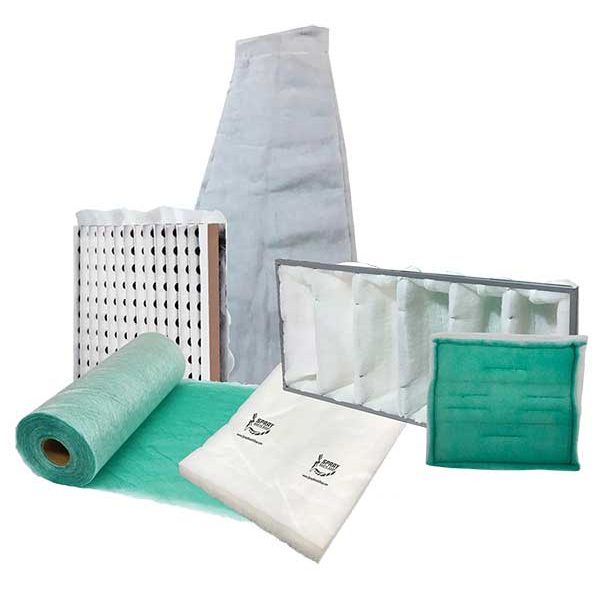In the world of automotive and industrial painting, maintaining a clean environment is crucial for high-quality finishes. GFS filters and paint booth filter play a vital role in controlling dust, overspray, and contaminants, ensuring smooth, professional results. This guide explores the different types of filters, their functions, maintenance practices, and tips for maximizing their lifespan. Whether you’re operating a small workshop or a large-scale painting facility, understanding how to choose and maintain your paint booth filters is key to achieving optimal performance.
Understanding GFS Filters
GFS filters are designed to capture fine particulates and paint overspray within paint booths. These filters help maintain air quality, protect equipment, and prevent defects in painted surfaces. Choosing the right GFS filter can make the difference between a flawless finish and a costly rework.
Types of Paint Booth Filters
There are several types of paint booth filters, each suited for specific applications:
- Intake Filters – Installed at the air entry points, intake filters prevent dust and debris from entering the booth, ensuring that the air circulating inside is clean.
- Exhaust Filters – These filters capture overspray and airborne contaminants before the air exits the booth, protecting both workers and the environment.
- Cartridge Filters – Often used in high-efficiency paint booths, cartridge filters offer excellent dust retention and longer life.
- Roll Filters – Economical and easy to replace, roll filters are commonly used in standard booths to maintain clean airflow.
Benefits of Using GFS Filters
Using GFS filters in your paint booth offers several advantages:
- Improved Finish Quality – Filters prevent particles from settling on wet paint, reducing imperfections like orange peel or specks.
- Extended Equipment Life – Clean air reduces buildup on fans, ducts, and spray guns, helping equipment last longer.
- Health and Safety – Proper filtration removes hazardous particles from the air, protecting workers from inhalation risks.
- Cost Efficiency – While high-quality filters may have a higher initial cost, they reduce rework, save time, and minimize wasted materials.
Selecting the Right Paint Booth Filter
Choosing the right filter depends on your specific needs:
- Application Type – Automotive, industrial, or custom finishing each require different filter efficiencies.
- Booth Design – Crossdraft, downdraft, or semi-downdraft booths may have different filter requirements.
- Airflow Requirements – Proper airflow is crucial for consistent paint application and safety. Filters must match the booth’s CFM (cubic feet per minute) rating.
- Filter Material – Fiberglass, synthetic, or polyester media may be used depending on your paint type and booth conditions.
Installation and Maintenance Tips
Proper installation and maintenance of paint booth filters are essential for peak performance:
- Correct Placement – Ensure intake and exhaust filters are securely installed to prevent air bypass.
- Regular Inspections – Check filters for damage or clogging to maintain airflow and efficiency.
- Replacement Schedule – Follow manufacturer recommendations for filter replacement, typically after a set number of hours or overspray accumulation.
- Cleaning Booth Surfaces – Keep walls, floors, and equipment clean to reduce the burden on filters and maintain air quality.
Common Issues with Paint Booth Filters
Even high-quality GFS filters can face issues if not properly maintained:
- Clogging – Excessive overspray or dust can reduce airflow, affecting finish quality.
- Incorrect Filter Type – Using the wrong filter can allow contaminants to enter or reduce efficiency.
- Improper Installation – Misaligned or loose filters can lead to air bypass and uneven paint results.
Extending Filter Life
- Pre-Filters – Use pre-filters to capture larger particles and extend the life of primary filters.
- Booth Cleaning Routine – Frequent cleaning reduces dust accumulation on filters.
- Monitor Air Pressure – Some booths have gauges to indicate filter clogging; replace filters when pressure drops exceed recommendations.
Environmental Considerations
Modern paint booths often require compliance with environmental standards. Proper disposal and recycling of used paint booth filters ensure that your operations remain eco-friendly. Many facilities use filter disposal programs to handle overspray safely.
Final Thoughts
GFS filters and paint booth filters are essential components of any painting operation. Selecting the right filter, maintaining it properly, and understanding the airflow dynamics of your booth can dramatically improve finish quality, equipment longevity, and workplace safety. Regular inspections, proper installation, and adherence to manufacturer guidelines are key to ensuring your paint booth operates at peak efficiency.
FAQs
Q1: How often should I replace my paint booth filters?
A1: Typically, filters should be replaced after a specified number of hours of use or when airflow is noticeably reduced. Regular inspection is essential.
Q2: Can I clean and reuse GFS filters?
A2: Some filters can be lightly cleaned, but most overspray filters are designed for single use. Always follow manufacturer recommendations.
Q3: What is the difference between intake and exhaust filters?
A3: Intake filters prevent contaminants from entering the booth, while exhaust filters capture overspray before air exits the booth. Both are crucial for maintaining clean air.
Q4: Are high-efficiency filters necessary for all paint booths?
A4: Not always. Efficiency requirements depend on the type of painting and finish quality desired. High-efficiency filters are recommended for premium finishes.
Q5: How do I ensure my filters are installed correctly?
A5: Follow the booth manufacturer’s guidelines, ensure a snug fit without gaps, and check airflow patterns for uniform coverage.
 :
https://www.sprayboothshop.com/
:
https://www.sprayboothshop.com/

